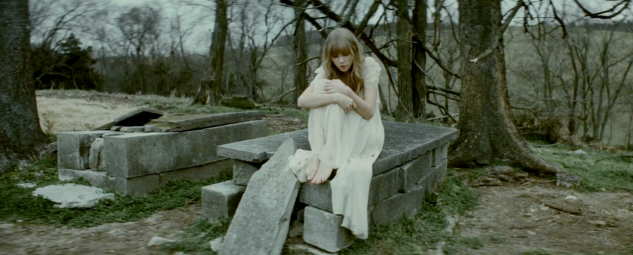Abbey Road Autopsy: Decoding a Conspiracy or Dissecting Beatlemania?

Half a century on, the rumors persist: Paul McCartney is dead, replaced by a lookalike. As a semiotician and student of the Beatles’ profound impact on global culture, I’m less interested in proving or disproving this claim than understanding why it continues to resonate. Is the Abbey Road cover a subliminal announcement of Paul’s demise, or a reflection of the band’s complex inner world and a testament to the power of myth-making? Today, we'll delve into the cultural semiotics explanation of Abbey Road conspiracy and expose the realities of the Paul McCartney death hoax. As Professor Eleanor Vance, author of "Semiotics of Sound," I invite you to join me in dissecting this enduring pop culture phenomenon.
Album Cover Analysis: Symbolic Funeral Procession?
The Abbey Road album cover has become a cornerstone of the "Paul is Dead" conspiracy. The image, depicting the Beatles crossing Abbey Road, is interpreted by some as a symbolic funeral procession. Are these carefully constructed clues, or are conspiracy theorists projecting meaning onto a simple photograph? Let’s examine some of the most cited "evidence."
The Beatles as Funeral Archetypes?
One popular interpretation casts John Lennon in white as a priest, Ringo Starr in black as an undertaker, Paul McCartney barefoot and out of step as the corpse, and George Harrison in denim as the gravedigger. It’s a compelling narrative, but is it supported by evidence outside the desires of conspiracy theorists? Semiotics teaches us that meaning is often context-dependent, but can also be imposed onto situations by outside observers. It's interesting to see how online forums Paul is dead conspiracy have taken these visual images and added their own narratives and reasoning.

The "28IF" License Plate
The Volkswagen Beetle parked on the street displays the license plate "28IF." Conspiracy theorists claim this referred to Paul being 28 if he had lived. The problem? Paul was 27 when Abbey Road was released. While the age detail may seem like definitive proof, the claim is an exercise in creative license and ignores the inconvenient truth of McCartney’s actual age. Analyzing Abbey Road album cover death clues, it is clear to see that this particular myth is not factual.

The Cigarette Switch
Another clue, according to some, is that Paul held a cigarette in his right hand on the original photo, implying a switch to a left-handed imposter. This argument hinges on the assumption that Paul was definitively right-handed, an assumption that is impossible to know for sure. This also assumes he would never hold anything in his left hand, which is also not necessarily true.

Lyric Analysis: Backward Masking and Auditory Pareidolia
Moving beyond the album cover, conspiracy theorists have turned to the Beatles’ music for alleged hidden messages. One popular example is the claim that when "All You Need Is Love" is played backward, you can hear the phrase "Yes, he's dead." What is backward masking and how does it work in perpetuating these kinds of theories?
The human brain is adept at finding patterns, even where none exist. This phenomenon, known as auditory pareidolia, often leads to misinterpretations of sound. The alleged message is likely a product of wishful (or fearful) thinking, not a deliberate inclusion by the Beatles. We are more likely to hear messages we expect or want to hear.

Online Community Analysis: Echo Chambers of Belief
The internet has played a crucial role in the dissemination and perpetuation of the "Paul is Dead" conspiracy. Fan forums and websites like YesterdayNeverKnows.net serve as echo chambers, reinforcing existing beliefs and providing a platform for new interpretations.
Here are some examples of the discourse found within these communities:
- YesterdayNeverKnows.net forum excerpt: "PaulIsDead4Ever: OMG! Did you guys see the new remastered version of Abbey Road? They tried to hide it, but you can CLEARLY see that 'Paul' is taller than he used to be. It's the imposter, I tell you!"
- YesterdayNeverKnows.net forum excerpt: "LennonFan72: Lennon TOTALLY knew about it. Listen to 'How Do You Sleep?' The line 'The only thing you done was yesterday'…it's about how Paul's career died! He's dissing the fake Paul!"

These interpretations, while intriguing, often rely on selective evidence and ignore alternative explanations. Height fluctuations can be attributed to various factors, and lyrical interpretation is always subjective. Attributing Lennon’s lyrics to direct knowledge of a conspiracy is a considerable stretch. This phenomenon mirrors the Elvis death hoax with their rabid online community support.
The Psychology of Conspiracy Belief
Why do people believe in the Paul McCartney death hoax? Several psychological factors may contribute. Conspiracy theories can provide a sense of control in a chaotic world, offering simple explanations for complex events. They can also foster a sense of community among believers, providing a shared identity and purpose. Additionally, the confirmation bias plays a significant role, with individuals seeking out information that confirms their existing beliefs and ignoring contradictory evidence. It's clear why the Abbey Road album cover symbolism keeps getting perpetuated when these factors are involved.

Beatlemania and the Power of Myth-Making
Ultimately, the "Paul is Dead" conspiracy is not just about a single individual; it's about the broader phenomenon of Beatlemania and the enduring power of myth-making. The Beatles were more than just a band; they were cultural icons who captured the imaginations of millions. Their music and image became deeply intertwined with the collective unconscious, fueling endless speculation and interpretation. Beatlemania also helped spread the Beatles' cultural impact during that time.

The conspiracy taps into our innate desire for narrative, for hidden meanings, and for a sense of connection to something larger than ourselves. It transforms a simple photograph and a collection of songs into a complex puzzle, inviting us to participate in the ongoing construction of the Beatles' legend.
Conclusion: The Enduring Power of the Beatles
The "Paul is Dead" conspiracy is a fascinating case study in cultural semiotics and the power of myth-making. While the evidence for Paul's demise is flimsy at best, the conspiracy's enduring appeal speaks volumes about our desire for narrative, our susceptibility to pattern recognition, and our enduring fascination with the Beatles. What role did the internet play in spreading the Paul Is Dead conspiracy? It enabled a faster spread of information with users around the world.
Whether you view Abbey Road as a sinister puzzle or a snapshot of a band on the brink, its iconic status remains unchallenged. And perhaps that's the real conspiracy: the enduring power of the Beatles to capture our imaginations, even in the face of the absurd. To learn more about the semiotics of popular culture, visit my blog, Semiotics of Sound.
